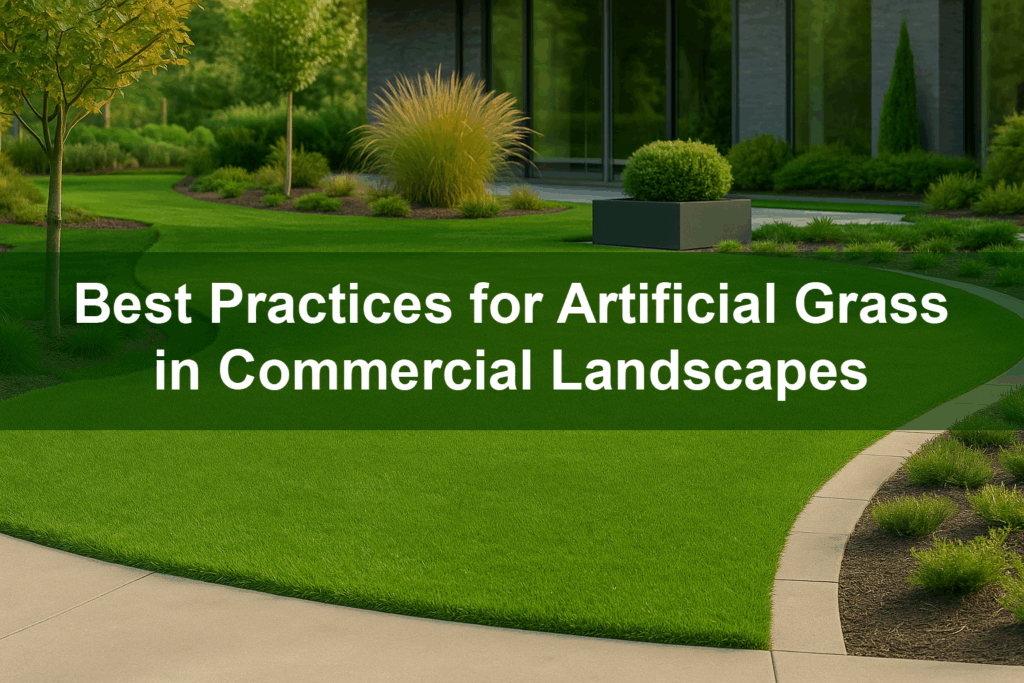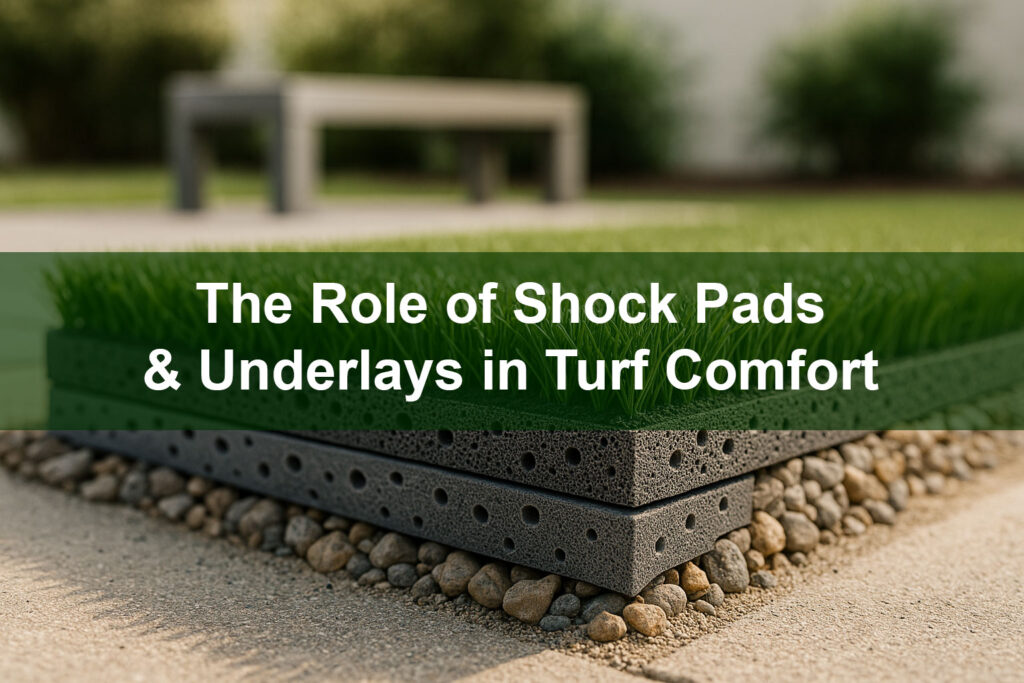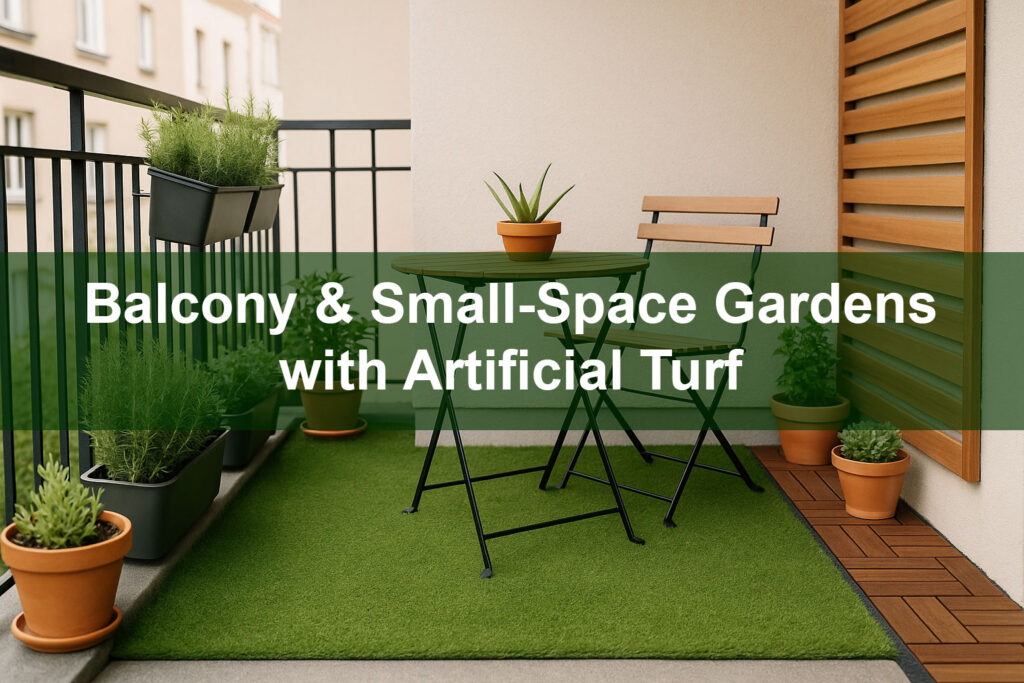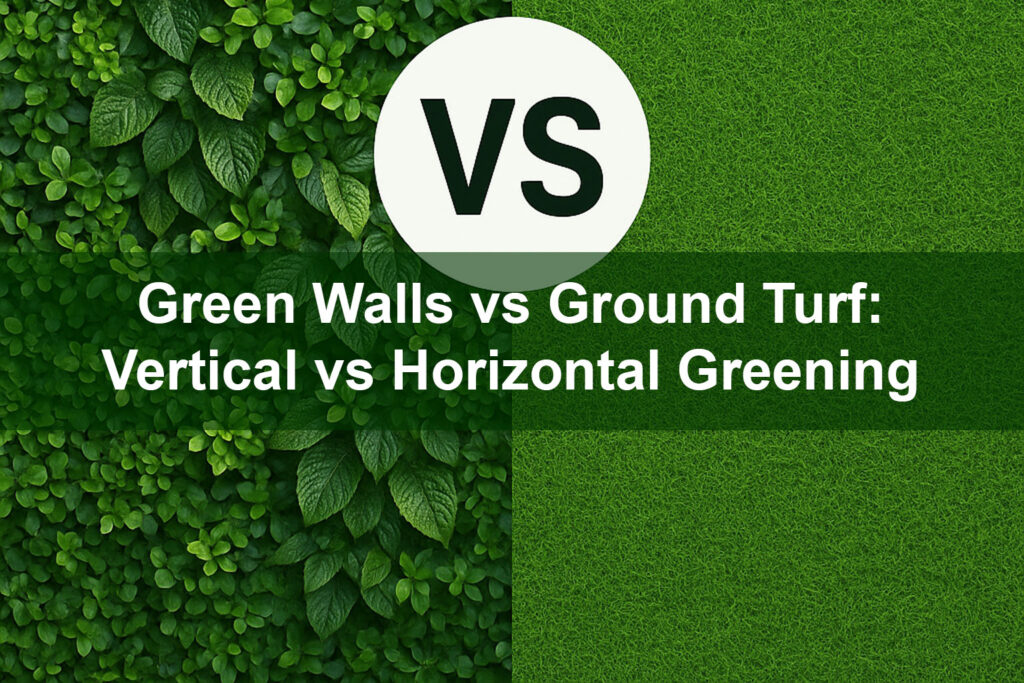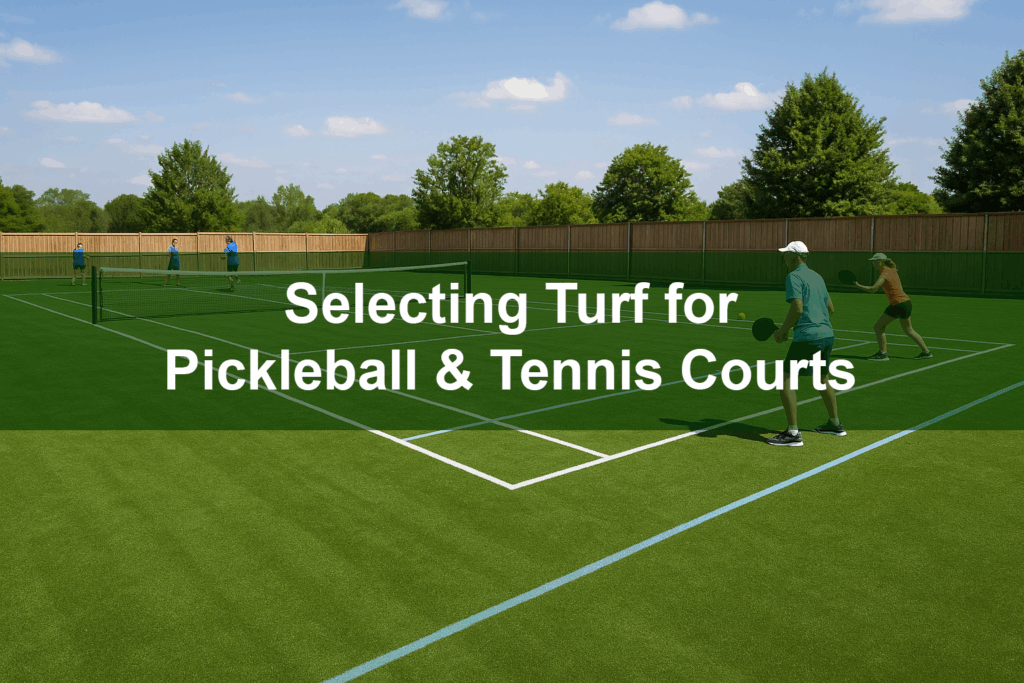Best Practices for Artificial Grass in Commercial Landscapes
Commercial properties—from office parks and retail plazas to hotels and multifamily complexes—rely on attractive, durable outdoor spaces to impress visitors and tenants. Artificial grass offers a low-maintenance, evergreen solution, but achieving professional results on a large scale requires precise planning and execution. In this guide, we outline best practices for specifying, installing, and maintaining synthetic turf in commercial environments.
By following these recommendations, facility managers, landscape architects, and maintenance teams can ensure long-lasting performance, cost efficiency, and compliance with safety and sustainability standards.
What You’ll Learn in This Guide:
- Site assessment and load-bearing considerations
- Selecting commercial-grade turf products
- Base installation and drainage solutions for heavy traffic
- Seaming, edging, and safety surfacing protocols
- Infill recommendations for high-impact zones
- Sustainability and heat-management strategies
- Routine maintenance schedules and troubleshooting
1. Conduct a Thorough Site Assessment
Begin by evaluating the site’s soil conditions, grade, and anticipated loads. Commercial landscapes often accommodate heavy foot traffic, service vehicles, and outdoor furniture. Ensure subgrade soils have suitable bearing capacity or plan for structural enhancements—such as reinforced sub-base layers—especially in zones near entrances or seating areas.
Key assessment steps include soil compaction testing, existing irrigation removal, and mapping underground utilities to prevent damage during installation.
2. Select Commercial-Grade Turf
Commercial settings demand durable, UV-resistant fibers with high tensile strength. Look for turf specifications that include:
- Face weight ≥ 60 oz/yd²: For resilience under heavy use
- UV stabilization: Guards against fading in direct sunlight
- Fire-resistant ratings: Meets local fire codes for public spaces
- Antimicrobial backing: Ideal for healthcare or hospitality areas
3. Install a Robust Base & Drainage System
A well-engineered base ensures surface stability and rapid drainage. Commercial projects often require a 4–6 inch compacted aggregate sub-base topped by a geotextile layer to prevent settlement. Incorporate sloped grading (1–2%) and subsurface drainage channels to manage heavy rainfall and reduce slip hazards.
Consider installing catch basins or linear trench drains in high-volume areas adjacent to building entrances.
4. Seaming, Edging & Safety Surfacing
Neat seams and secure edges are critical for commercial durability. Use wide commercial seam tape with two-part urethane adhesive rated for outdoor exposure. For edging, install aluminum or composite landscape edging anchored with concrete or heavy-duty stakes. In children’s play areas or pool surrounds, supplement turf with safety surfacing—such as rubber underlayment—meeting ASTM standards.
5. Choose the Right Infill Strategy
Infill supports fiber resilience and ballast. In commercial zones, opt for a combination of silica sand and rubber crumb to balance weight, shock absorption, and heat reduction. Apply infill in 1–2 lb/ft² increments, brushing between layers to ensure uniform distribution.
6. Implement Sustainability Measures
Reduce environmental impact by selecting turf made from recycled materials and specifying cooling infills—such as plant-based or non-heat-retentive granules. Pair turf installations with permeable paving and rainwater harvesting to create green infrastructure that meets LEED or local sustainability criteria.
7. Establish a Maintenance & Inspection Plan
Commercial landscapes benefit from professional maintenance schedules. Implement monthly inspections for seam integrity, drainage performance, and infill levels. Include quarterly power brushing and annual deep cleaning with commercial-grade turf cleaners. Document all maintenance activities and consider remote monitoring for large campuses.
Conclusion & Next Steps
Applying these best practices—from thorough site evaluation to rigorous maintenance—ensures your commercial artificial grass installation delivers lasting performance and aesthetic appeal. For large-scale projects, partner with certified installers to guarantee compliance and quality. Visit our installation experts page or download our commercial specification guide for detailed templates and checklists.
Elevate Your Commercial Landscape
Contact Buy-Grass today for custom commercial turf solutions and expert installation.

